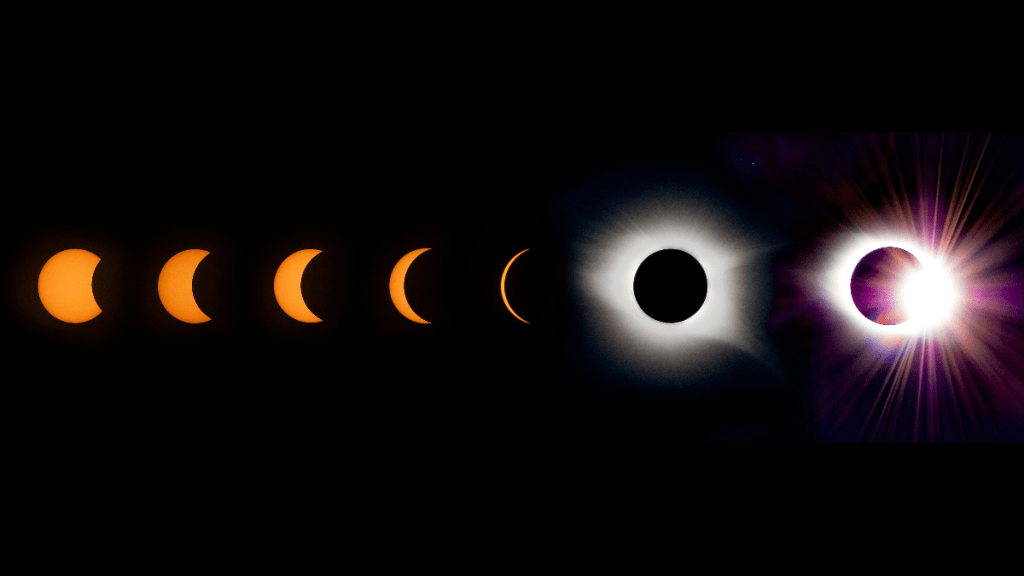On Monday, April 8th, a large portion of the United States will have the opportunity to witness a rare total solar eclipse, which consists of five total stages all with their own unique sights.
Stage one kicks off when the moon just begins its trek across the sun. When this happens, it will look like a disc was carved out of our star. The disc will, of course, continue to grow and almost look like something is taking bites out of the solar disc.
At this time, some will begin to see shadow bands, which are wavey shapes that project on surfaces and look similar to the shadows at the bottom of pools created by water. Interestingly, scientists don’t know what causes shadow bands, but they theorize an interruption in Earth’s atmosphere has something to do with them.
Baily’s beads, which look like bright silver dots along the outer edges of the moon may also begin during stage one. This phenomenon happens when the sun’s light filters around the topography of the moon’s surface.
When stage one, also known as first contact, completes, the second contact begins. You’ll know this has happened when you see a bright diamond
Totality Will Offer Unique Views Of The Cosmos
Stage three is marked by totality, which is when the moon is completely covering the sun. During this stage, you will see white lights shooting around the edges of the moon, and solar prominences may be visible. Also, if you’re lucky enough to have clear skies, stars and planets that are typically hard to see from Earth will be more profoundly visible.
If you’re watching the solar eclipse outside, you will notice the birds stop chirping and the crickets take over. The temperature will also drop between five and 20 degrees.
Stage four is called third contact. This happens when the moon begins to move away from the sun, which creates another partial eclipse. It will begin to unveil the sun and look similar to stage two but reversed. Baily’s Beads and shadow bands will return, as well.
Stage five is the final stage, and it marks the completion of the total solar eclipse. Once the event ends, the contiguous US won’t see another total solar eclipse for 20 years.
You can find the source of this story’s featured image here.
Want to be happier in just 5 minutes a day? Sign up for Morning Smile and join over 455,000+ people who start each day with good news.



